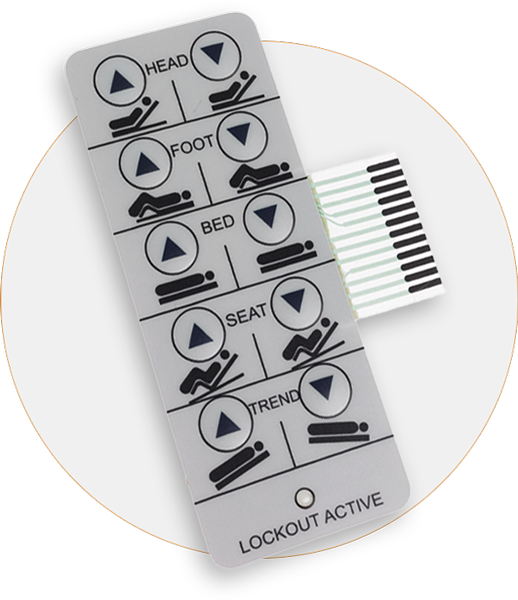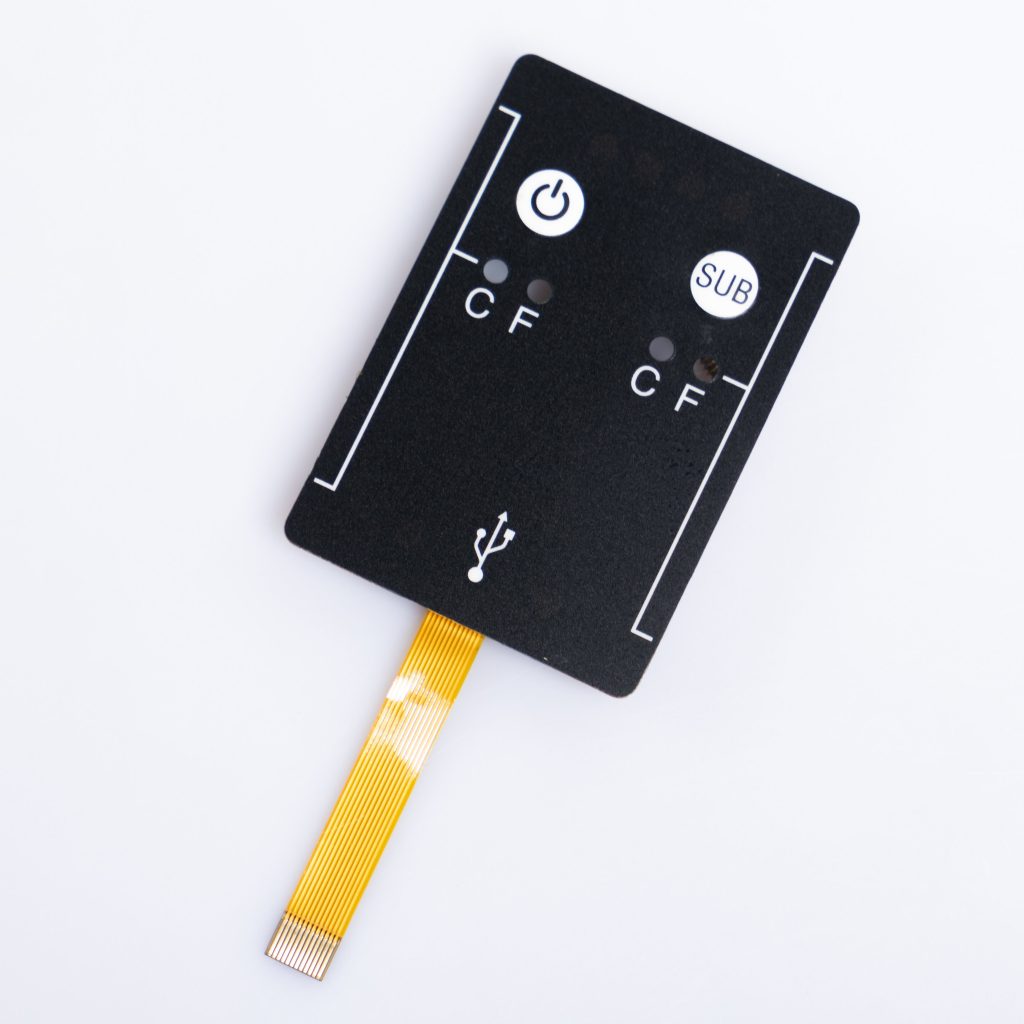The Benefits of Making Use Of Membrane Layer Switches Over in Customer Electronic Devices
Membrane buttons are significantly recognized for their considerable benefits in customer electronics, particularly in improving customer interaction and enhancing manufacturing procedures. The adaptability in layout permits for tailored options that meet diverse customer needs.
Improved Customer Experience
In today's competitive landscape of consumer electronic devices, enhanced customer experience is paramount; nearly 85% of users prioritize intuitive interfaces. Membrane layer switches play an important duty in achieving this level of use.
The responsive feedback given by membrane switches is necessary for assisting customer actions, guaranteeing that commands are signed up properly. This feedback device heightens and decreases errors user satisfaction, cultivating a positive partnership in between the device and the customer. Moreover, the personalized nature of membrane switches over permits producers to customize interfaces to specific customer needs, making tools more obtainable and inviting.
Additionally, membrane buttons can incorporate backlighting and visuals overlays, even more boosting presence and usability in diverse settings. This adaptability makes sure that devices stay useful and user-friendly, no matter the setup. In general, the combination of membrane layer switches into customer electronic devices dramatically improves customer experience, driving brand loyalty and satisfaction in a significantly open market.
Cost-Effective Production
Customer electronic devices makers are continuously looking for methods to balance top quality with affordability, and membrane layer buttons provide an engaging option for cost-efficient manufacturing. membrane switch. These elements are inherently less complex than conventional mechanical switches, which lowers both production prices and complexity. The light-weight design of membrane switches over permits lower shipping expenses and easier integration right into small gadgets, further improving their charm in a competitive market

Manufacturers can generate membrane layer switches in high quantities, making use of economic climates of scale. This mass manufacturing ability guarantees consistent top quality while dramatically reducing per-unit costs. Additionally, the materials made use of in membrane layer switches, such as polyester and polycarbonate, are commonly much less costly than those needed for standard button technologies, adding to overall cost savings.
The manufacturing procedure for membrane switches over commonly needs fewer steps and much less labor compared to other switch types. This streamlined method not only minimizes labor costs but additionally speeds up time-to-market, allowing firms to respond swiftly to customer need. As a result, the combination of minimized product costs and efficient manufacturing processes placements membrane changes as a clever financial investment for producers intending to deliver top notch customer electronics at competitive cost factors.
Layout Flexibility and Customization
While conventional mechanical switches usually enforce restrictions on design because of their bulk and required installing mechanisms, membrane buttons supply unrivaled flexibility and personalization alternatives for customer electronic devices. This ingenious modern technology permits designers to develop smooth, inconspicuous user interfaces that can effortlessly integrate into various item aesthetic appeals, from mobile phones to kitchen devices.
Membrane buttons can be produced in essentially any type of form or size, allowing producers to tailor the format to particular ergonomic and functional needs. This versatility not only boosts Our site customer experience however likewise permits artistic layouts that line up with brand identity. The usage of printed graphics on membrane switches offers the possibility for detailed layouts and dynamic colors, which can be conveniently customized without significant price effects.
Furthermore, membrane buttons can integrate multiple capabilities into a single layer, minimizing the requirement for multiple parts and simplifying assembly procedures. This structured layout technique lessens area and weight, making it suitable for small customer electronic devices. In general, the layout flexibility and modification capabilities of membrane switches over encourage suppliers to innovate, inevitably bring about more easy to use and interesting items.
Sturdiness and Integrity
As technology proceeds to evolve, the durability and reliability of membrane switches have ended up being important factors to consider for manufacturers in the consumer electronics Extra resources industry. Membrane switches are developed to stand up to rough ecological conditions, including temperature changes, wetness, and dirt exposure. Their durable construction usually involves multi-layered products that provide a reliable obstacle against impurities, ensuring durability and regular performance.
Along with environmental resistance, membrane layer switches over offer premium mechanical reliability. Unlike typical mechanical switches, which might use out over time, membrane changes make use of a sealed layout that minimizes the risk of mechanical failing. The lack of relocating parts not just improves their life-span however likewise minimizes deterioration, making them perfect for high-usage applications.
Additionally, membrane switches can withstand a considerable variety of actuations without loss of performance, usually going beyond countless cycles (membrane switch). This sturdiness translates to decrease replacement prices and minimized downtime for producers and consumers alike. In general, the mix of ecological resilience and mechanical integrity makes membrane switches over a critical option for customer electronics, guaranteeing that devices continue to be effective and operational throughout their desired life expectancy

Streamlined Product Growth
The durability and integrity of membrane layer switches significantly add to structured product development in the customer electronic devices field. By incorporating these switches early in the design process, manufacturers can decrease the complexity and number of parts required in their items. Membrane layer switches are portable and light-weight, permitting more effective room usage within devices, which can bring about simplified setting up processes.

The convenience of making membrane layer buttons additionally plays a pop over to this web-site critical duty in item development. With contemporary printing strategies and materials, production can be scaled effectively, lessening preparations and reducing waste. This causes lower production prices, improving overall success.

Final Thought
In conclusion, membrane layer switches significantly improve consumer electronic devices by providing a boosted user experience, cost-effective manufacturing procedures, and functional design choices. The integration of membrane switches over represents a critical option for manufacturers seeking to maximize product layout and performance.
Membrane buttons are increasingly acknowledged for their substantial benefits in customer electronic devices, particularly in improving individual communication and enhancing manufacturing procedures. Additionally, the materials utilized in membrane layer switches, such as polyester and polycarbonate, are commonly much less pricey than those required for traditional button innovations, adding to overall expense financial savings.
The production procedure for membrane changes generally calls for less steps and much less labor compared to various other button types. Unlike conventional mechanical buttons, which may wear out over time, membrane layer switches make use of a closed layout that lessens the threat of mechanical failing.In conclusion, membrane layer switches over substantially enhance customer electronics by supplying a boosted individual experience, cost-efficient manufacturing processes, and versatile layout alternatives.